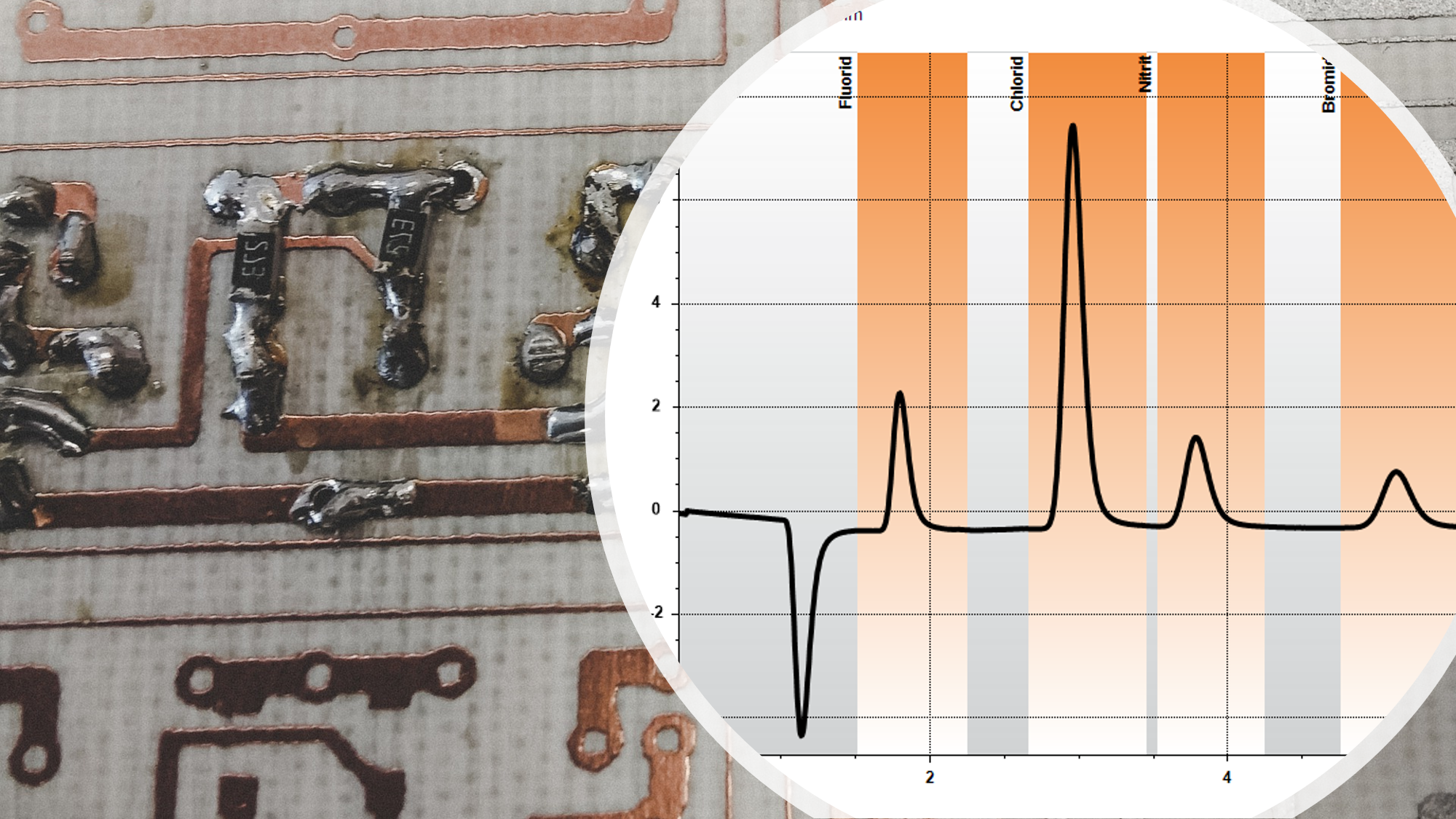Qualitative and quantitative determination of ionic residues
Ion exchange chromatography (IC)
Ion exchange chromatography (IC) is the method of choice for the qualitative and quantitative analysis of ionic residues on components, in aqueous solutions or in oils. These analyses are mainly focused on the prevention of corrosion damage caused by salt residues. Although similar in nature, this method is characterized by the significantly higher level of detail compared to the ROSE measurement.
Measuring principle
Unless the ionic impurity is already in an aqueous solution (e.g. when testing cleaning baths), it is extracted at the beginning of the analysis and transferred to a suitable medium. This extraction can be carried out in different, component-specific ways. Components can be rinsed with deionized water (VW PV 3678 / VW 01137) or the components can be heated in a closed KAPAK® bag in a water/isopropanol mixture (IPC-TM-650 2.3.28 regulations). If the concentration of certain ions in oils is to be determined, the sample is usually shaken out in water to obtain a usable solution. The extract obtained is then separated by chromatography using suitable separation columns and the individual ions are detected in a conductivity measuring cell. The different ions can be characterized by their retention times and quantified by using suitable reference standards.
Profile
| Typical industrial branches | Electronics / circuit board production, Automotive industry, Mechanical engineering, Medical devices |
|---|---|
| Type of contamination | Ionic contamination from soldering processes, Anions: Fluoride, Chloride, Nitrite, Bromide, Nitrate, Phosphate, Sulfate, Kationen: Lithium, Sodium, Ammonium, Potassium, Magnesium, Calcium, Weak organic acids and their conjugated bases: Formate, Adipate, Succinate, Malate, Methanesulfonic acid |
| Result | ppm, mg/L, µg/cm² |
| Testing standards and regulations | IPC-TM-650 2.3.28, IPC-TM-650 2.3.28.2, ZF TRW 235462 (Rev. B), DIN EN ISO 10304-1, DIN EN ISO 14911 |
Further Information
These tests are part of our accreditation, detailed information on the scope of accreditation can be found here.
You can also find an overview of tests for chemical-film contamination in our current brochure.
If you have any questions, the employees from our sales team will be happy to help you.
Newsletter registration

